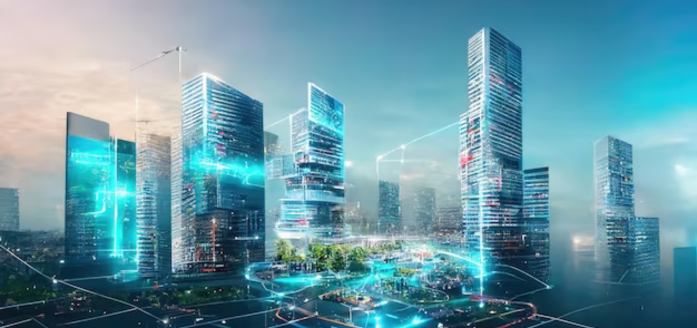Advertentie

Building Tomorrow's Cities: How Connected Technology is Driving Urban Innovation
In an era of rapid urbanization and technological advancement, cities around the world are embracing the concept of becoming "smarter." This transformation is driven by the integration of connected technologies and data-driven solutions aimed at improving the quality of life for residents, enhancing sustainability, and optimizing urban operations. From smart infrastructure and efficient transportation systems to digital governance and citizen engagement, let's explore how cities are harnessing the power of connected technology to build a smarter, more resilient future.
1. Smart Infrastructure: At the heart of smart cities lies a network of interconnected infrastructure, including sensors, meters, and other IoT devices, that collect and analyze data in real-time. These sensors can monitor various aspects of urban life, such as traffic flow, air quality, energy consumption, and waste management, providing valuable insights that enable city officials to make data-driven decisions and optimize resource allocation. By leveraging smart infrastructure, cities can improve operational efficiency, reduce costs, and enhance the quality of services provided to residents.
2. Efficient Transportation Systems: Connected technology is revolutionizing urban mobility by enabling the development of smarter transportation systems. From real-time traffic monitoring and intelligent traffic signal control to ride-sharing apps and electric vehicle charging stations, cities are leveraging data and connectivity to improve the efficiency, safety, and sustainability of transportation networks. By promoting alternative modes of transportation, reducing congestion, and optimizing routes, smart transportation initiatives are helping to create more livable and accessible cities for residents.
3. Digital Governance and Citizen Engagement: Smart cities are leveraging technology to enhance civic participation and transparency through digital governance platforms and citizen engagement initiatives. Online portals, mobile apps, and social media channels enable residents to access government services, report issues, and provide feedback to city officials in real-time. By fostering greater transparency, accountability, and collaboration between government and citizens, smart cities are empowering residents to actively participate in shaping the future of their communities.
4. Sustainable Urban Development: Connected technology is playing a critical role in promoting sustainable urban development and environmental stewardship. Smart buildings equipped with energy-efficient systems and smart meters enable real-time monitoring and optimization of energy consumption, reducing carbon emissions and lowering utility costs. Similarly, smart water management systems can detect leaks, monitor water quality, and optimize irrigation practices, conserving water resources and mitigating the impacts of climate change.
5. Enhanced Public Safety and Security: Smart cities are leveraging connected technology to enhance public safety and security through advanced surveillance systems, emergency response networks, and predictive analytics. Video cameras, sensors, and IoT devices enable real-time monitoring of public spaces, detecting potential threats and facilitating rapid response by law enforcement and emergency services. By leveraging data and analytics to anticipate and prevent crime, smart cities are creating safer and more resilient communities for residents.
6. Improved Quality of Life: Ultimately, the goal of smart cities is to improve the quality of life for residents by leveraging technology to address urban challenges and enhance overall well-being. By optimizing urban operations, reducing environmental impact, promoting equitable access to services, and fostering innovation and economic growth, smart cities are creating more livable, sustainable, and resilient communities where people can thrive and prosper.
In conclusion, connected technology is driving a paradigm shift in urban development, transforming cities into smarter, more efficient, and sustainable ecosystems. By harnessing the power of data and connectivity, cities can address pressing urban challenges, enhance the quality of life for residents, and pave the way for a more prosperous and inclusive future. As cities continue to evolve and embrace innovation, the possibilities for leveraging connected technology to build smarter, more resilient communities are virtually limitless.



